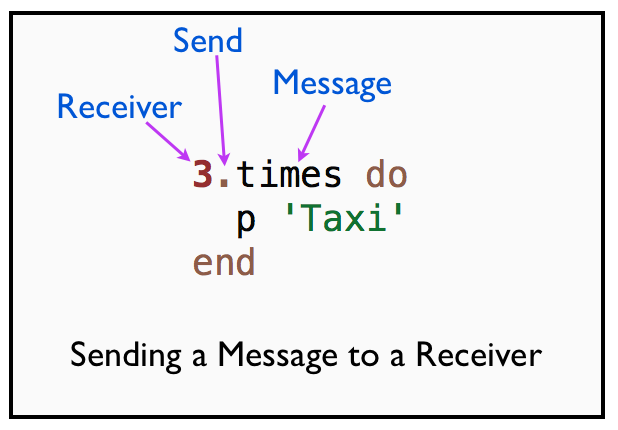Sending a Message to a Receiver
In this chapter, you will learn about the receiver object and sending messages to a receiver.
Hail Taxi
Let's write a simple program to hail a taxi.
3.times do
puts 'Taxi'
end
This prints:
Taxi
Taxi
Taxi

Receiver and Message
Let's identify the receiver and the message in this simple program. The number 3 is the receiver. The times() method is the message. The dot represents sending the message to the receiver.

The dot notation is used when sending a message is explicit.
Receiver Object
The receiver is an object. Let's find out the class of the receiver object for our simple program.
puts 3.class
This prints:
Fixnum
This demonstrates that Fixnum object 3 is the receiver object. It receives the times() message.

Fabio Asks
Why is it called the receiver?
Because this object would have received the message that caused the method to execute.
Rhonda Asks
Why do we need a receiver?
In a OO language like Ruby, everything happens by sending messages to an object. This object is the receiver. In the next chapter, we will discuss more about message passing.

Identify the receiver for the car program we wrote in the previous chapter.
Summary
In this chapter, we saw:
- What is a receiver?
- What is a message?
In the next chapter we will answer questions such as, what is a sender? Who is sending this message?